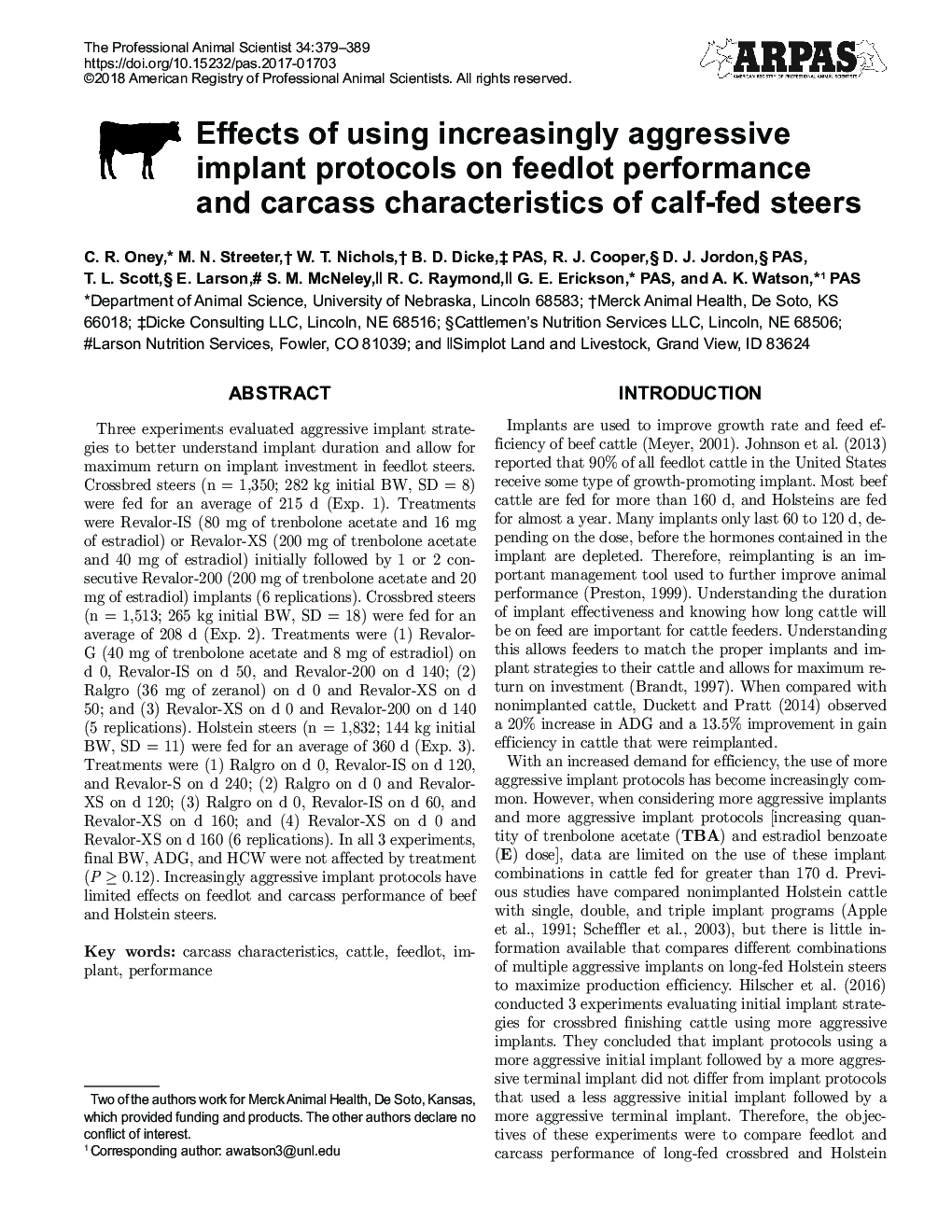| Article ID | Journal | Published Year | Pages | File Type |
|---|---|---|---|---|
| 8503661 | The Professional Animal Scientist | 2018 | 11 Pages |
Abstract
Three experiments evaluated aggressive implant strategies to better understand implant duration and allow for maximum return on implant investment in feedlot steers. Crossbred steers (n = 1,350; 282 kg initial BW, SD = 8) were fed for an average of 215 d (Exp. 1). Treatments were Revalor-IS (80 mg of trenbolone acetate and 16 mg of estradiol) or Revalor-XS (200 mg of trenbolone acetate and 40 mg of estradiol) initially followed by 1 or 2 consecutive Revalor-200 (200 mg of trenbolone acetate and 20 mg of estradiol) implants (6 replications). Crossbred steers (n = 1,513; 265 kg initial BW, SD = 18) were fed for an average of 208 d (Exp. 2). Treatments were (1) Revalor-G (40 mg of trenbolone acetate and 8 mg of estradiol) on d 0, Revalor-IS on d 50, and Revalor-200 on d 140; (2) Ralgro (36 mg of zeranol) on d 0 and Revalor-XS on d 50; and (3) Revalor-XS on d 0 and Revalor-200 on d 140 (5 replications). Holstein steers (n = 1,832; 144 kg initial BW, SD = 11) were fed for an average of 360 d (Exp. 3). Treatments were (1) Ralgro on d 0, Revalor-IS on d 120, and Revalor-S on d 240; (2) Ralgro on d 0 and Revalor-XS on d 120; (3) Ralgro on d 0, Revalor-IS on d 60, and Revalor-XS on d 160; and (4) Revalor-XS on d 0 and Revalor-XS on d 160 (6 replications). In all 3 experiments, final BW, ADG, and HCW were not affected by treatment (P ⥠0.12). Increasingly aggressive implant protocols have limited effects on feedlot and carcass performance of beef and Holstein steers.
Related Topics
Life Sciences
Agricultural and Biological Sciences
Animal Science and Zoology
Authors
C.R. Oney, M.N. Streeter, W.T. Nichols, B.D. PAS, R.J. Cooper, D.J. PAS, T.L. Scott, E. Larson, S.M. McNeley, R.C. Raymond, G.E. PAS, A.K. PAS,
